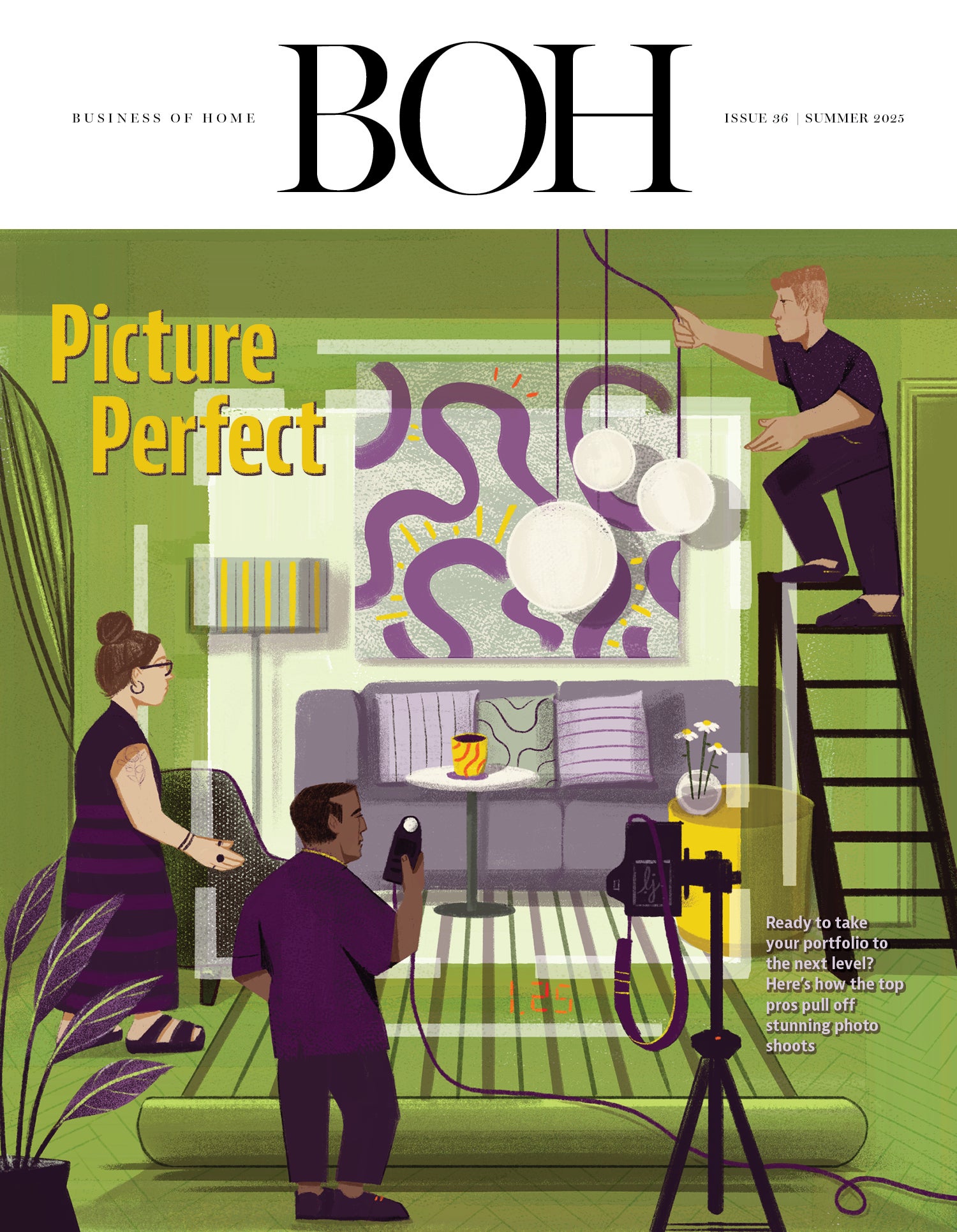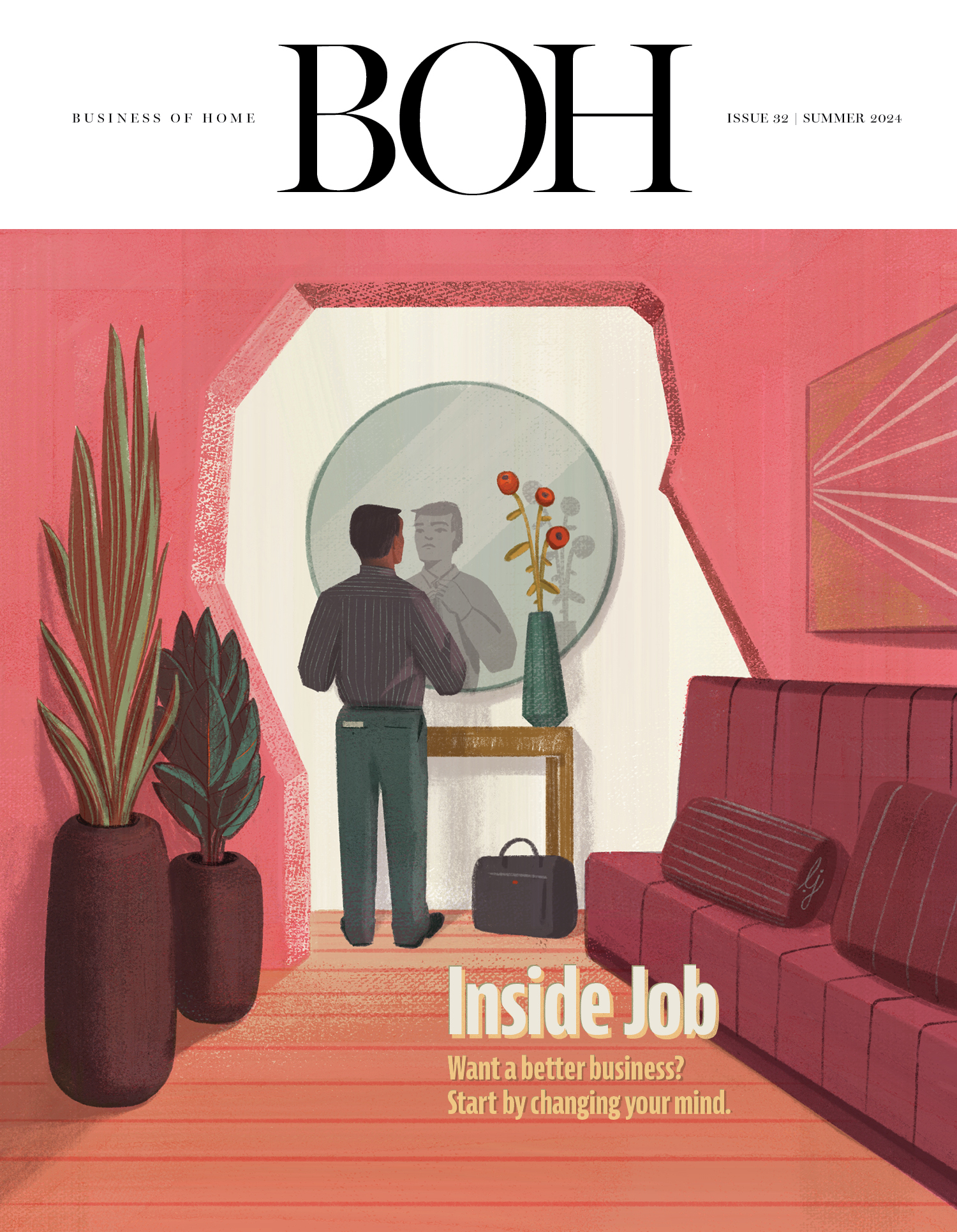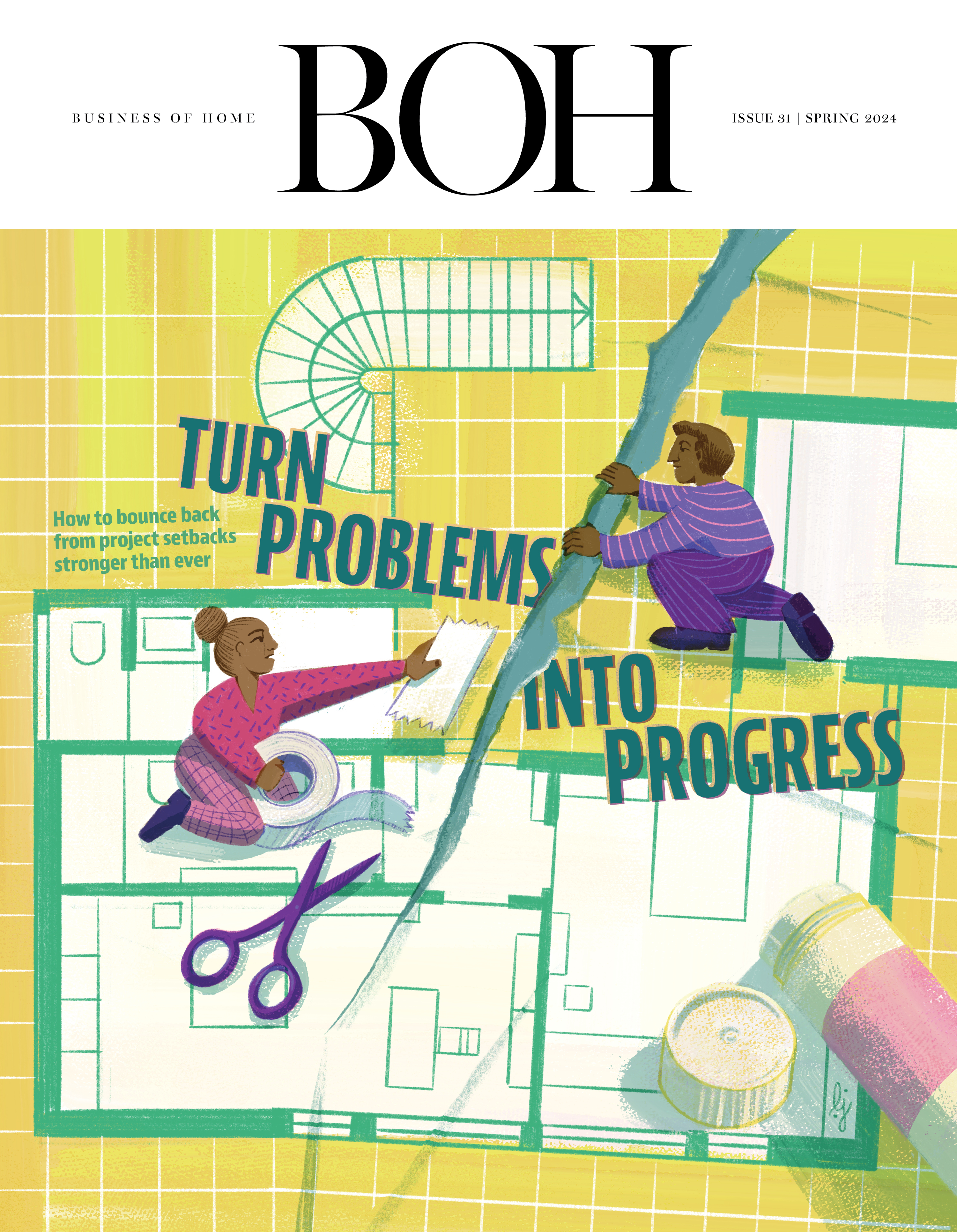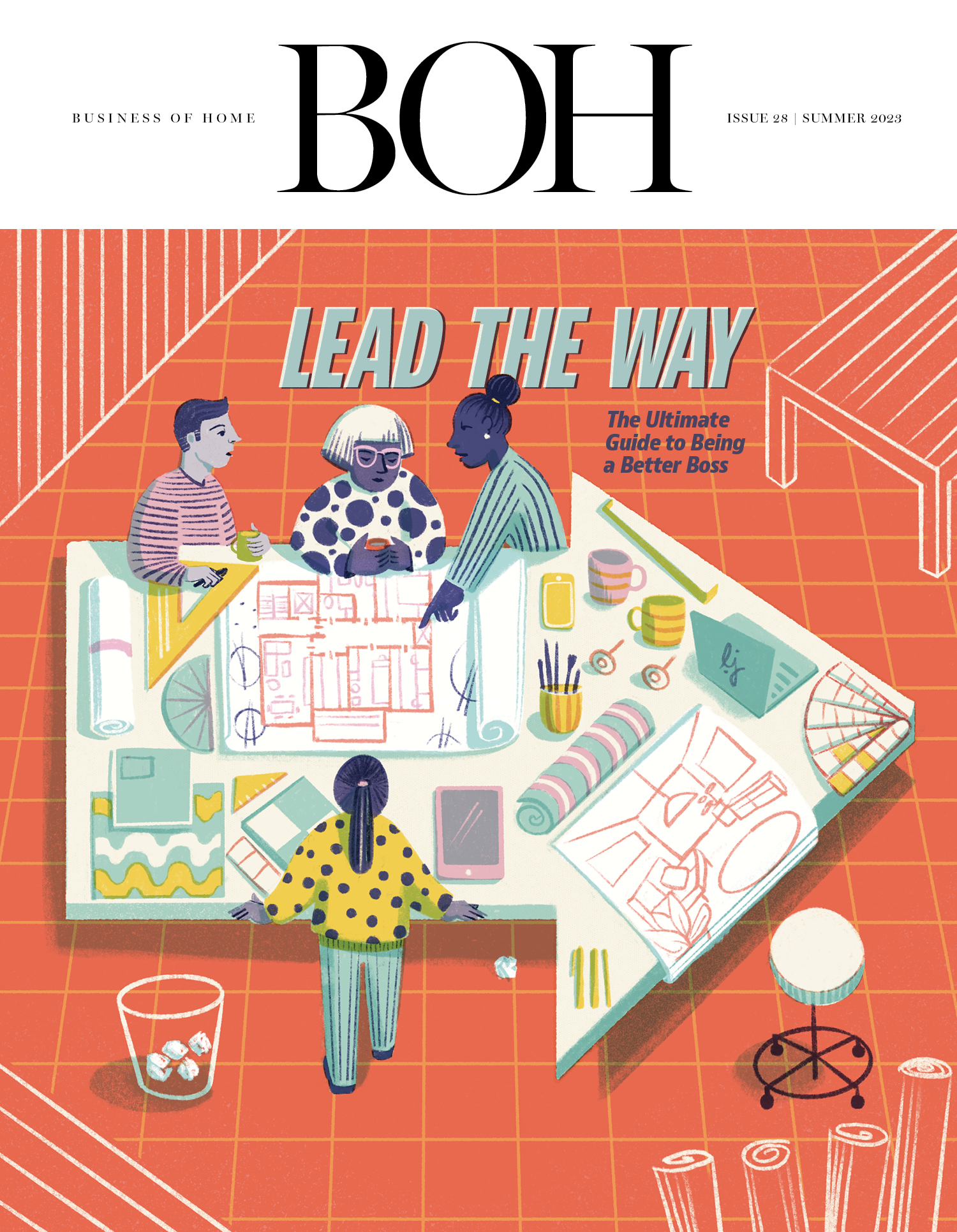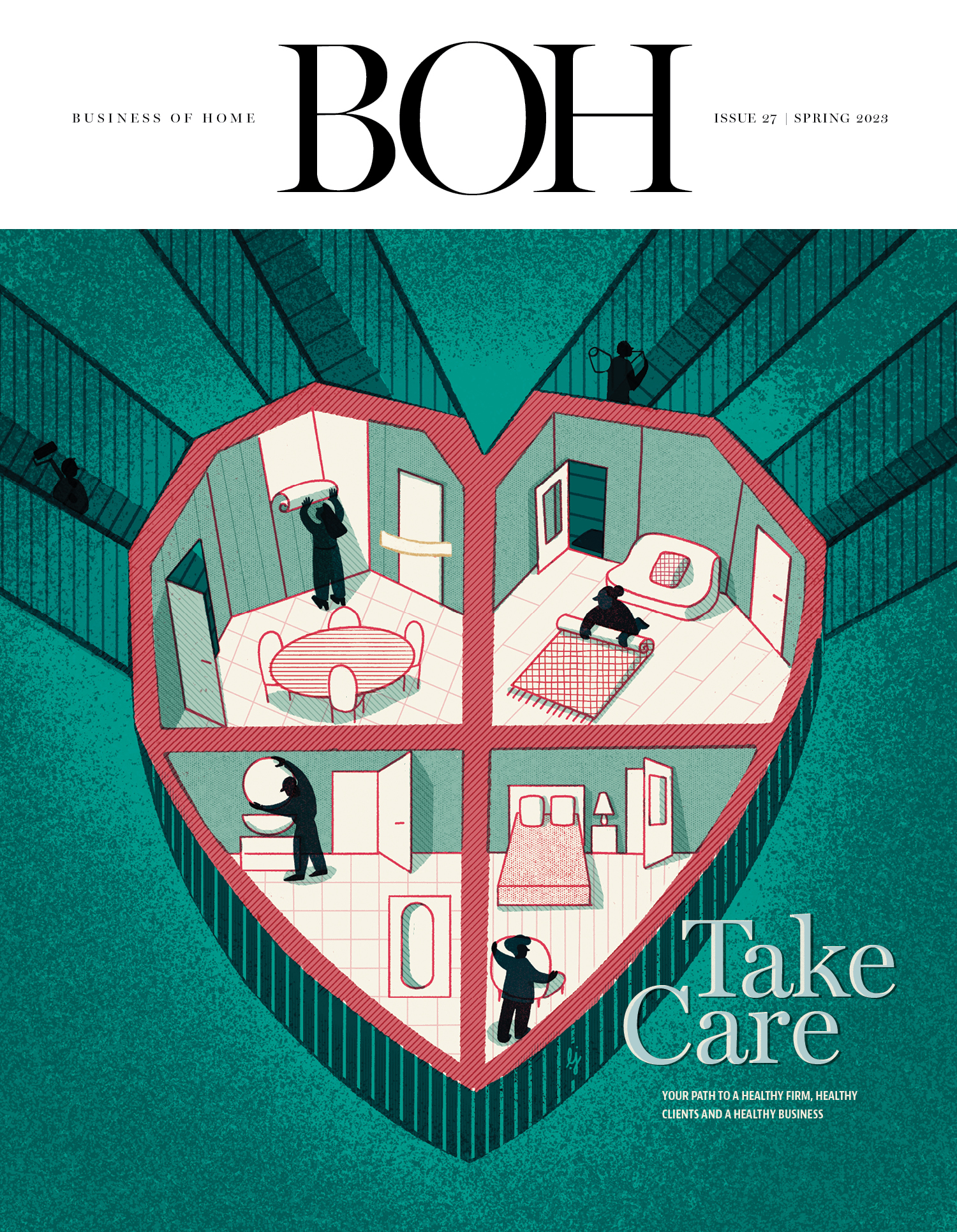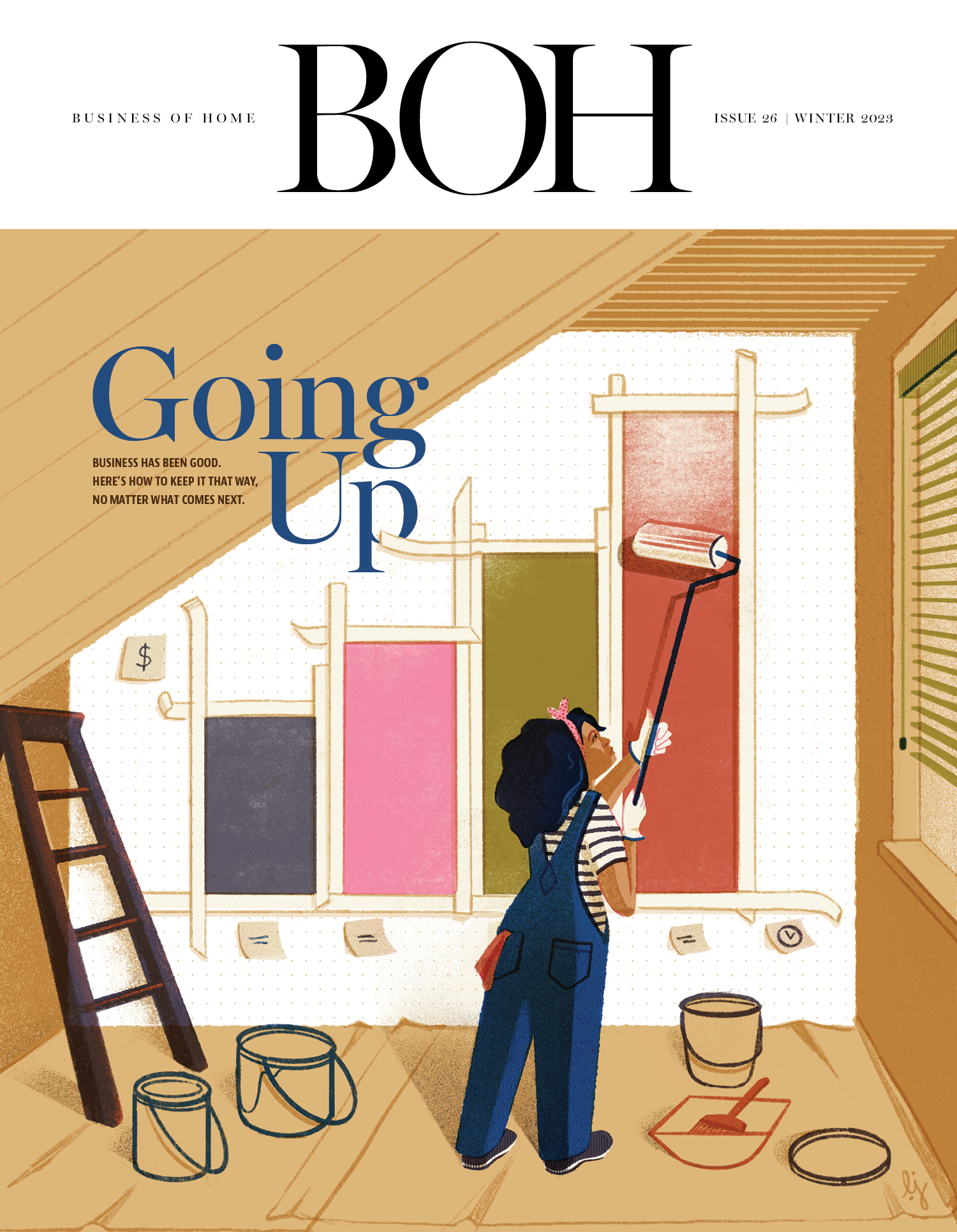The words ‘bloodbath’ and ‘HGTV’ rarely appear together, but so it was last month, when The Daily Mail reported that the network was on a cancellation spree, axing four shows in the span of a week. The publication quoted an anonymous source at the network as saying that revenue was down and that it “had to stop the bleeding.”
But that was just the beginning. Since then, HGTV has canceled an additional three shows, bringing up the body count to seven. The casualties include long-running fan favorites like Christina on the Coast; the Daytime Emmy-nominated Married to Real Estate; and Farmhouse Fixer, hosted by Jonathan Knight of New Kids on the Block fame.
It’s not uncommon for a network to thin its ranks. But the surge of cancellations all at once—especially of shows with solid ratings and rabid fanbases—caught many by surprise. In some cases, the hosts themselves appeared to have little advance warning and took to social media to vent. “Our entire business and lives have been put through the ringer at the hands of a giant corporation,” wrote Keith Bynum, host of the now-canceled Bargain Block, on Instagram. “Everyone always told us TV is a fickle world and they are very right. TV is full of a lot of great people but it’s also full of some of the worst people I’ve ever encountered.”
HGTV itself has remained quiet on the cancellations, declining to comment. Into that void has flooded speculation, gossip and vitriol from jilted fans. Only time will tell what’s really going on at the network, but there’s no question that the cuts come at a transitional moment: What’s ailing HGTV could help shine a light on the fractured future of design media.
One of the most intriguing theories about the cuts is that HGTV is eliminating shows partially because of tariffs—kind of. Though homeowners featured on renovation shows usually foot the bills for the actual work, rising prices and shifting supply chains have made the renovation process longer and more unpredictable. That, in turn, amplifies production costs for the studio.
A recent article in Deadline estimates that producing an episode of a home renovation show costs in the neighborhood of $500,000, compared to shows that focus on buying and selling real estate, which range from $200,000 to $300,000. Covid-era inflation, and now an unpredictable trade policy, have only exacerbated the disparity.
“Stuff wouldn’t arrive on time; we had wood floors, for instance, that would come in six weeks after we started production,” an unnamed producer told Deadline. “Some of our episodes took 16 weeks to shoot; it’s more labor-intensive than doing a real estate show. … because all of the materials are jacked up and on delay, the price of wood and marble and everything else is going up, so these shows don’t make as much sense anymore.”
Most of the shows cut by HGTV in this recent spree are home renovation shows. In that, the cancellations fit a broader pattern in recent years, as the network has moved its focus away from design and construction toward real estate and house flipping. While some observers have attributed this change to audiences’ shifting taste, it may in fact be a simple cost-cutting measure.
Another way to frame the HGTV cuts is to look upward, toward the company’s corporate structure. In June, the network’s parent conglomerate Warner Bros. Discovery announced plans to consciously uncouple itself, splitting the corporation into two companies (named, conveniently enough, “Warner Bros.” and “Discovery Global”).
On one side, Warner Bros. will take the movie studios, HBO and streaming service HBO Max. On the other, Discovery will take the sports site Bleacher Report, CNN’s planned streaming service and a hefty portfolio of cable channels, including HGTV. From the get-go, Discovery will be saddled with tens of billions of debt (a holdover from loans taken out when Warner Bros. and Discovery merged in the first place). Its new CEO Gunnar Wiedenfels—described by Variety as an “iron-fisted money manager”—will be tasked with cutting costs to pay it down. Seen through that lens, it’s possible that HGTV’s cancellation spree is downstream of a changing of the guard.
But whether it’s inflation, tariffs or corporate musical chairs, the reality is simple: HGTV needs to save money because its audience is shrinking. Though the network is still among the most-watched cable channels in the U.S., the audience for “linear” television has been in structural decline over the last decade as consumers shift their attention to streaming and apps like TikTok. Deadline reports that in 2017, HGTV averaged 1.5 million viewers; last year, the number was roughly half that, at 773,000. Even more troubling, the network is disproportionately losing young viewers, with the crucial 18-to-49 demographic down 26 percent last year.
“Right now is a weird time, because you’ve got three different generations consuming design content, and they all do it from a completely different standpoint,” says Brian Patrick Flynn. A former television producer turned set and interior designer and HGTV host, Flynn is uniquely situated to comment on the network’s twists and turns. “What used to be secondary, which would be streaming or digital, is now first; whereas linear is second. But the people who are loyal to linear—my generation (Generation X) and the generation before me—are still watching. … Right now, the key to success is having programs that still garner the boomer generation and the Gen Xers and then some type of counterpart that will allow for Gen Zs to get in on it.”
HGTV is not alone in its struggle amid the current media landscape, but other players in the space, like Disney and HBO, have been able to pivot to focus on streaming. HGTV hasn’t had as much luck there, as its shows don’t seem to have made a big splash on demand. Though executives once optimistically cheered the idea that consumers would flock to stream lifestyle content, the reality has been more mixed. Audiences generally turn on Netflix or Disney+ because they want to sit down and watch something. HGTV has historically benefited from passive viewing—with a chunk of its audience leaving it on in the background and tuning in and out.
Seven cancellations does not a meltdown make, and HGTV is hard at work casting for its next spate of shows. Deadline reports that sources inside the company want to make the network “sexier” and bring it closer to the pop culture zeitgeist with shows like the Jack McBrayer–hosted Zillow Gone Wild and a new Bobby Berk show produced by actor and wrestler John Cena. HGTV has pivoted before. Fans believe it can pivot again.
“[HGTV] has managed to reinvent itself over the years so many times,” says Flynn. “I think if it does end up that linear TV is not really a thing anymore, HGTV will be one of the pioneers that finds out whatever is next. It has managed to do it for 30 years now. I don’t know why it wouldn’t be around for the next 30.”
Whatever happens with HGTV, there’s no doubt that the future of filmed design media is veering away from the traditional cable format. Video design content now pops up everywhere, from streaming platforms to Instagram Reels. There was even a period when Quibi, a now-defunct upstart short-form content app, was airing Mikel Welch’s wickedly funny horror-reno hybrid Murder House Flip.
The sense that HGTV’s window of opportunity is narrowing has caused many industry personalities to explore YouTube, the natural online home for long-form design and renovation content. YouTube, which boasts a jaw-dropping 2.5 billion active users, is a many-flowered garden. There, DIY influencers sit alongside upscale fare like Homeworthy, Quintessence and Designer Home Tours. Earlier this year, Corey Damen Jenkins launched his own show, Design Reimagined, on YouTube. More and more, designers and design content creators are taking to the platform to bring HGTV-like content directly to the streaming masses.
Actress and influencer Eva Amurri, known for her lifestyle blog Happily Eva After, is one of them. Amurri, who has of late been more active in the home world through a licensed collaboration with direct-to-consumer upholstery brand BenchMade Modern, recently launched a renovation show on YouTube called The Westport Project. A collaboration with Westport, Connecticut–based residential construction firm The O’Dell Group, the show follows the construction of a beachfront house, documenting week-to-week progress on the project in real time.
“I wanted to maintain control,” says Amurri. “I know the town, and [O’Dell head of operations] Chris O’Dell better than anyone, and I think people are seeing [the renovation process] in ways they wouldn’t be if there were a bunch of people in a boardroom making decisions about it.”
Amurri and O’Dell have a kind of good cop, bad cop rapport that faintly echoes the dynamic between Chip and Joanna Gaines. The Westport Project is the kind of show that once would have only made sense on HGTV. Now, there are other options. Amurri is open to it being picked up by a network, but for now she’s monetizing the show by partnering with brands and collecting the cut of advertising YouTube doles out to creators.
“It’s been fun seeing how shows like this can come together, and I’ve been discovering a lot about parts of it that I enjoy personally,” she says. “It has been a cool learning experience. If we ever partner with a network, I want to understand the value-add these networks are bringing to me so that I can price that out accordingly.”
The design industry has long had a kind of love-hate relationship with HGTV. On the one hand, the network clearly cultivated the modern American appetite for design and designers. On the other, it is often blamed for giving would-be clients unrealistic expectations about how quickly and cheaply they can create a beautiful home.
But that’s the HGTV of the past. Tomorrow’s clients will be influenced not only by a cable channel that sets the tone for an entire nation, but by an increasingly diverse landscape of media properties and formats. What was once “But I saw it on HGTV!” will be “But I saw it on YouTube!” And soon: “But ChatGPT told me…”



